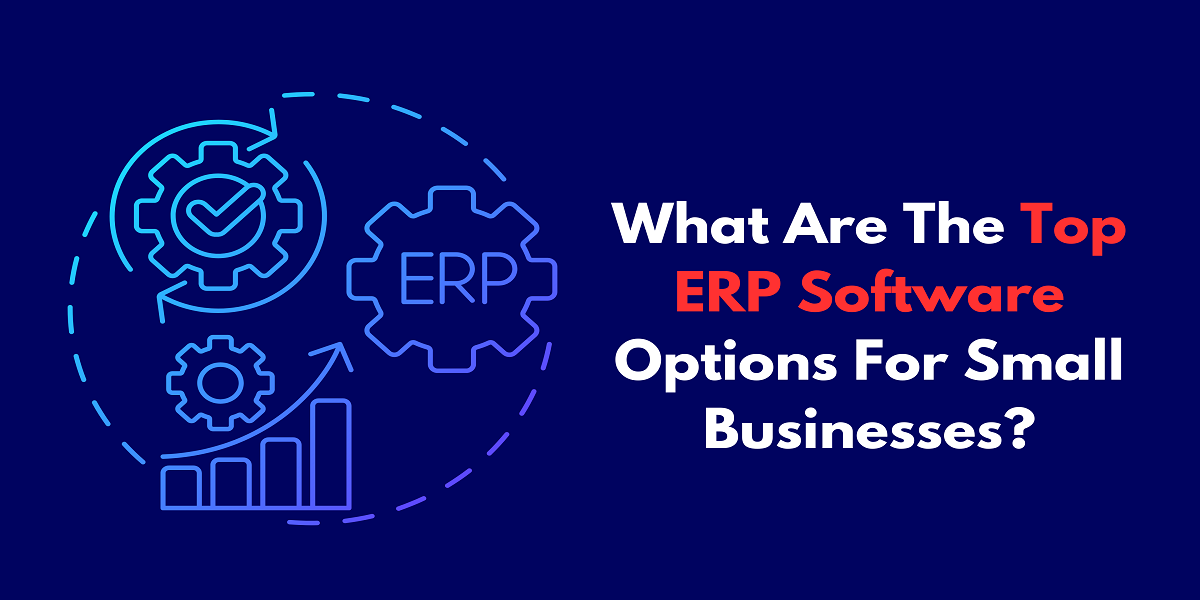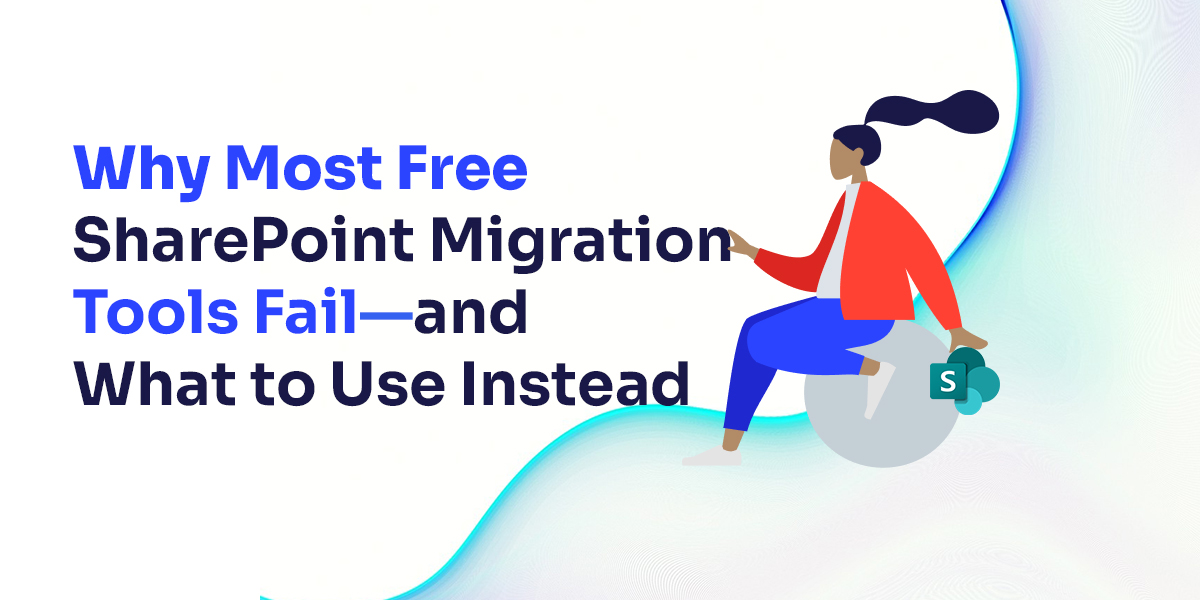What Are The Top ERP Software Options For Small Businesses?

As the statistics show companies that have implemented ERP systems enjoy a 32% operational cost savings and a 30% improvement in productivity.
Competition in business is increasing day by day, and successful small business needs to be efficient and accurate in their work. ERP system is software that acts as a single point of managing and coordinating all operational and administrative activities of an organization. Such processes may include inventory management, accounting, HR, supply chain, and others. This consolidates these functions and results in better operational efficiency, lower costs, and high productivity as provided by ERP systems.
Managing complex company processes through different systems is a common issue among small businesses and results in high operational expenses. ERP software resolves these issues by centralizing essential functions and ensuring that data is not fragmented, thereby promoting improved cooperation between departments. It also guarantees that different business sectors use reliable and comparable data, consolidating teamwork and organizational productivity.
Benefits of ERP Software
Improved Efficiency and Productivity
ERP software increases organizational efficiency and productivity since it eliminates repetitive tasks and reshapes processes. This saves the time of keying in data manually and performing other monotonous procedures which are often associated with high levels of error from the employees. For instance, inventory management, order processing, and financial reconciliations are activities that can be automated to improve processing time and reduce the number of errors made. This is because real-time data and analytics from ERP systems allow for better and faster decisions on resource utilization. This increase in efficiency results in a faster, more flexible business mechanism with resources directed towards development rather than repetitive work.
Enhanced Data Management and Accuracy
ERP system which centralizes data provides all departments with well-coordinated and accurate data. This centralization minimizes data duplication, fragmentation, and variation, which strengthens data quality and consistency. For example, the sales data can be easily integrated with inventory and financial data making it easier for all departments to work with the same data. what this synchronization implies is that the employees can be assured of the accuracy of data they are working on hence enhancing co-ordination and collaboration within the business. In addition, ERP software enriches data security as it has access control features that restrict data access to certain personnel. This safeguarding of data also benefits the business because it creates trust with the clients and stakeholders. After all, they know that their information is safe with the business.
Facilitates Better Decision-Making
By providing quality information and analytics, ERPs enable the small business owner or manager to make sound decisions. The real-time reporting facility of ERP software offers an understanding of KPIs, patterns, and trends along with forecasts. For instance, managers can use the information to compare sales for different months, see stock details in real time, and other financial indicators. It makes it possible to prevent strategies that are outdated by the current data from being implemented in the business environment. Regular data analysis promotes competitiveness as it allows the business to respond promptly to changes in the market environment and customer needs. Moreover, concerning analytics and reports, problems and further optimization can be identified and contribute to the constant advancement of the business. It is this advantage that enables the small business to thrive in the ever-changing market environment and achieve sustainable success.
Best ERP software solutions for small businesses
Microsoft Dynamics 365 Business Central
Company features in Dynamics 365 Business include payroll, inventory, order, project, supply chain, and risk features. It works well with other Microsoft applications and is hosted on Azure, which allows for its expansion, protection, and optimization for small businesses. Power BI integration offers sophisticated analytical capabilities; additionally, the system’s compatibility with numerous third-party applications improves organizational adaptability.
NetSuite
NetSuite is an ERP comprising inventory, vendor, and order management, as well as manufacturing and product life cycle management capabilities. It offers capabilities in general ledgers and other customizable accounts and has comprehensive custom reporting and analysis features. This entity allows small business to consolidate their financials, human resources, and professional services automation providing them with the necessary tools to manage their business with the flexibility needed and obtain the critical information required at the right time they need it.
Sage Intacct
Sage Intacct is known for providing integrated services targeting businesses that need effective ERP solutions; these are payroll services, inventory, order management, enterprise accounting, and multi-dimensional reporting. Integration tools improve collaboration within teams and a Subscription Billing feature is suitable for companies with subscription-based models. Sage Intacct has strengths in complex accounting processes and other features suitable for small businesses to achieve higher levels of operational financial control and steady development.
Odoo
Odoo stands out because it is an open-source ERP system, where many functions can be adjusted independently due to the modularity of the software. Its modular setup and SaaS subscription model make it accessible for small businesses to invest in this software to get good coverage of many business processes. The services offered by Odoo are liberal in the sense that organizations are barbed into assuming growth without assuming a high fixed cost and without having to force complex ERP solutions on business operations that may not need them.
CargoWise
CargoWise is an ERP software that is designed for 3PLs and freight forwarders, including all the functionalities required in logistics. It provides functionalities that are meant to cover all the existing logistical requirements with functionality that is easy to use. CargoWise service partners help handle freight logistics, import and export customs, shipment and transports, storage, and trade management in the same system. The software assists in managing and understanding various international trade laws, and import/export tariffs for a given business environment by recommending their legal consequences and avoiding penalties where necessary. It also offers flexible and feature-rich invoicing, billing, and even accounting features, coupled with meaningful business analytics capabilities, which help businesses to monitor overall operational efficiency in real-time. Self-diagnostic features for customer relationship management, warehousing, and scalable deployment incorporate the strength of CargoWise that fosters efficiency, cuts costs, and improves service delivery in the complex world of logistics.
Acumatica
Acumatica is an open cloud-based ERP solution that enables businesses to deploy the software according to their need. It covers all the basic aspects of financial management, which are critical to enable small businesses to efficiently manage their financial and accounting needs. Further, Acumatica provides powerful inventory and distribution functionalities that assist businesses in managing inventory and distribution with high efficiency. It also provides custom dashboards, and reports so that the users can design reports and interfaces that best represent the business performance, assisting in the decision-making process and strategizing.
SAP Business One
SAP Business One integrates the entirety of business processes while streamlining general functions like financial and sales management. It provides business intelligence and analytics that help small businesses make timely and informed decisions, thus increasing the effectiveness and competitiveness of firms in volatile markets. SAP Business One is built to systematically enhance operations and facilitate organic growth, which makes it a solid option for ambitious SMBs.
What should one consider when selecting an ERP?
Cost-Effectiveness
Another aspect that needs to be evaluated is the total cost of owning an ERP system. This entails a careful assessment of basic costs that may include expenditure on software acquisition licenses and on any computer hardware in case it is necessary. Furthermore, one should take into account implementation costs which include costs connected with consulting services, data transfer, and configuration costs. There are also recurring costs which may include updating the software, further technical assistance, and perhaps later enhancements. Defining the total acquisition cost also guarantees that the ERP solution is in line with the budget and other finance-related goals. You must also consider the cost of implementing the ERP system against the value and savings that will accrue to your organization.
Scalability and Growth Potential
Ideally, as your business evolves, your ERP system should grow with it in order to support the changing needs of your business environment. The issues of scalability are vital since they guarantee that the software can serve more users, data, and transactions at short intervals with ease. These are things like the capability to expand the different modules or functionality, in case the business develops in the future. The scalability of an ERP system refers to the ability of a business to expand and the system to handle that growth as the business gets larger and operations diffuse. It also aligns you with the market and strategies you hold for your business by allowing you to make changes so that your ERP solution is relevant in the future.
Integration Capabilities
Integration into current systems, third-party applications, and business processes should be a factor taken into consideration when selecting an efficient ERP system. This integration capability improves functionality productivity since the data can collocate between systems thereby prohibiting repetitive data entry hence decreasing reliability. For example, implementing ERP with the CRM system can keep and manage sales and customer services in check. Finally, compatibility with other business applications such as e-commerce solutions, payment processing systems, and supply chain management is important for creating a smooth and effective operational environment. This sort of integration not only leads to the assertion of quality data views but also contributes to the general increase in productivity through a holistic approach to IT.
Usability and User Interface
The user influence or the ability to make and modify an ERP system appeals to the end-user and facilitates its usage by the employees. Easy to navigate and easy to use means that it is easier for the staff to learn how to use the system and the intuitive layout helps shorten the amount of time that this takes. The simple user interface adds to the quicker rate of adoption and virtually negates the necessity of contending with training costs. The UI should incorporate proper structures through which the end-users can easily access these features and functionalities making work easier for persons using the software programs. One should rely on a decision made by stakeholders and managers when it comes to the selection process of ERP systems so that they would be effective within the workforce; therefore, one should also rely on the users’ opinions and perform usability tests.
Mobility and Accessibility
In today’s mobile-centric world, having an ERP system with robust mobile accessibility and remote capabilities is essential. This allows employees to access critical data and perform tasks from anywhere, whether they are in the office, working remotely, or on the go. Mobile accessibility enhances flexibility and responsiveness, enabling quick decision-making and timely actions. For instance, sales teams can update customer information or place orders directly from their mobile devices, while managers can approve transactions and monitor business performance in real time. Ensuring your ERP solution offers a mobile-friendly interface and secure remote access capabilities will help keep your business agile and connected, regardless of location.
Conclusion
ERP software has proven to be an invaluable tool for entrepreneurs and this is why small businesses are starting to incorporate it into their workflow. ERP implementations include prominent aspects of business like stock, accounts, employees, and supply chain to manage within a single software. organizational integration is that it increases efficiency through automation and ensures high accuracy of data through integration. ERP systems provide accurate and up-to-date data upon request so that timely and sound decisions can be made, establishing consistency between the organization's current and future strategies about the constantly changing market environment for sustainable growth and development.
Cost factors, flexibility, usage of space, ease of integration, and the possibility of adding other modules, should be the priorities for any small firm when they opt for ERP systems. These components ensure that the selected ERP solution is affordable, scalable to accommodate growth, compatible with existing systems, easy to implement to enhance quick adoption, and combinable with remote accessibility. Leading ERP software programs that currently exist are SAP Business One, NetSuite, Odoo, CargoWise, Sage Intacct, and Microsoft Dynamics 365 Business Central; these programs include different features that help fulfill various corporate specifications. From these solutions, provided small firms analyze them and consider corresponding operational requirements, they may minimize processes, reduce costs, and outline further development strategies for future success.
Hyperlink InfoSystem - Most Trusted End-to-End development Solution Provider.
Write For Us





